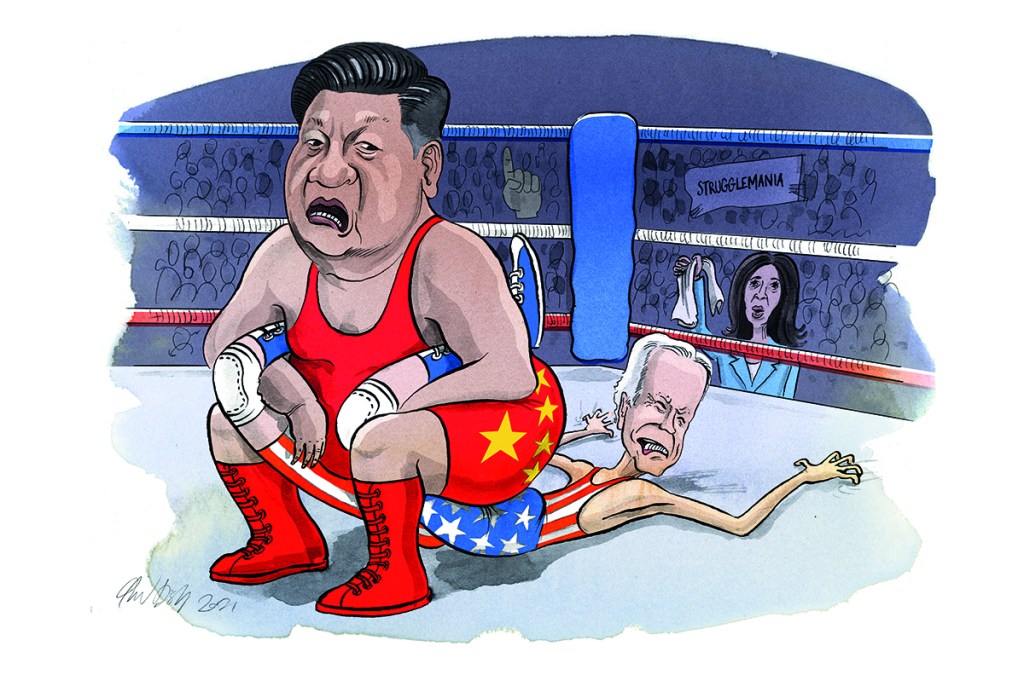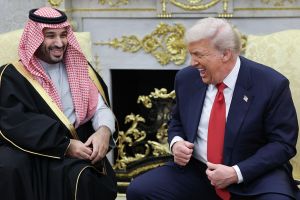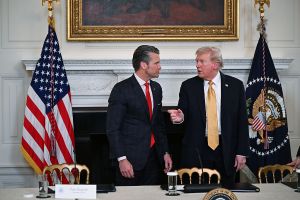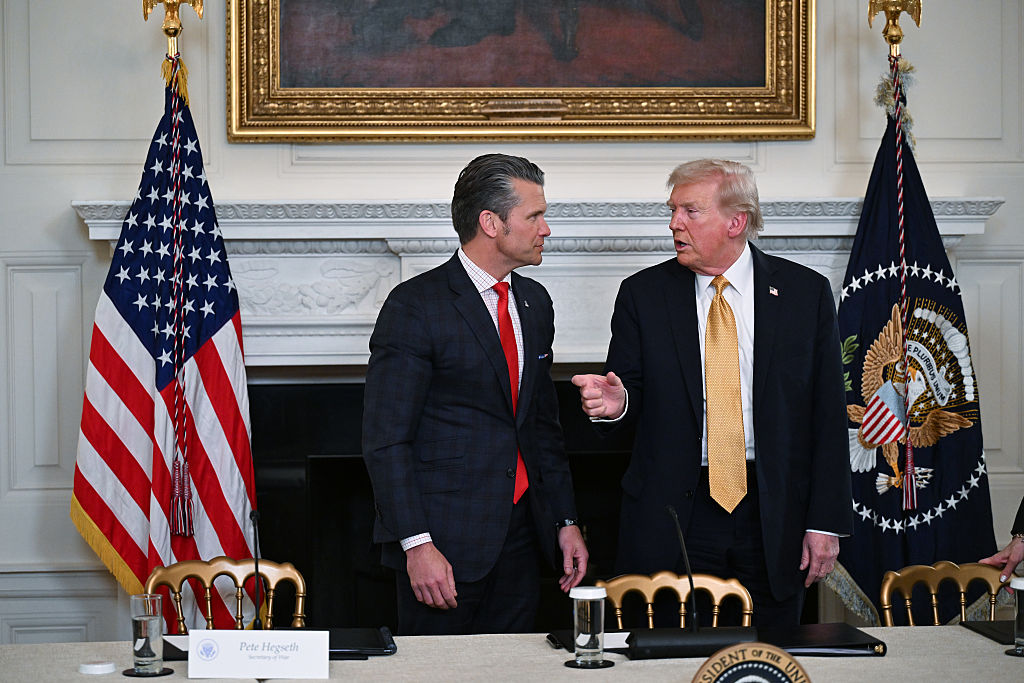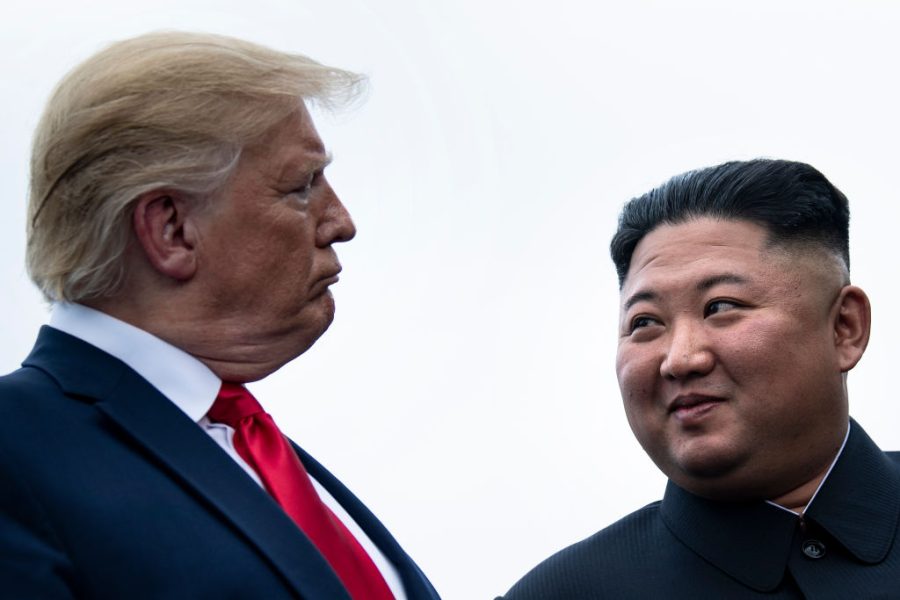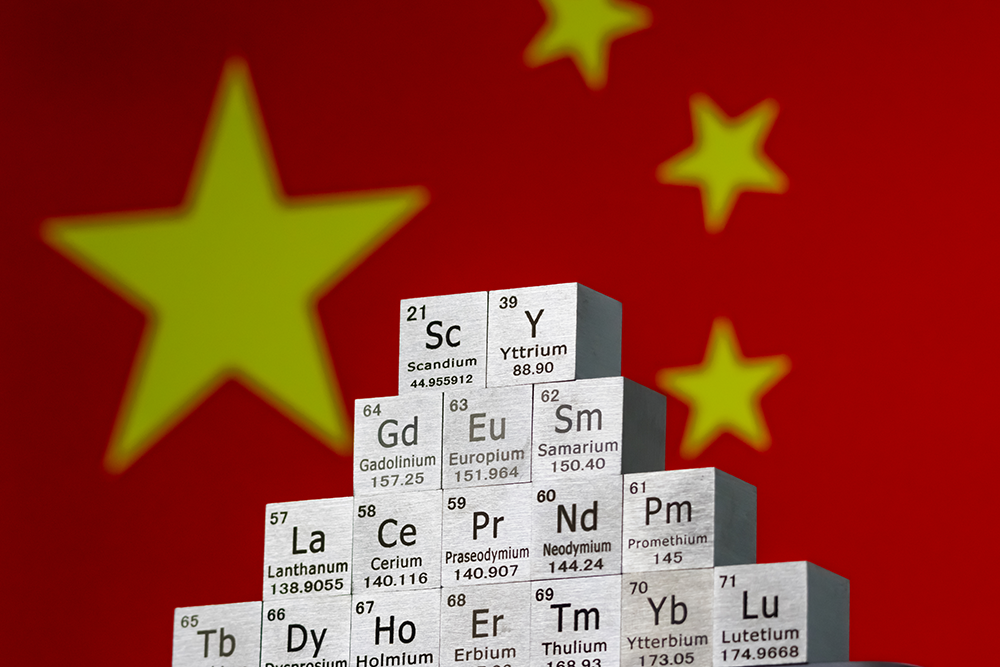Fifteen years ago, I remarked to an acquaintance over lunch that it looked like China might eat America’s lunch in naval power. My interlocutor, a person well-known in leadership positions in the China studies community, scoffed at my comment. Over the next few years, he never missed an opportunity to ridicule my wild-eyed prediction. I often wonder what he thought in February 2021 when, less than a month after becoming president, Joe Biden warned US senators that if America didn’t “get moving, [China is] going to eat our lunch.” I claim no credit for prescience, just a historian’s sensitivity to trends over time.
The fiftieth anniversary of President Richard Nixon’s visit to China falls in February 2022. The China bet that Nixon and his successors placed has transformed the world in a way none of them could have anticipated. Though Nixon retained his skepticism of the PRC regime, and though subsequent US presidents qualified their statements by acknowledging that real change in China’s nature would not happen quickly, we are now more than far enough along to confidently assess the true nature of relations between China and America, as well as China and the rest of the world. As Kurt Campbell, President Biden’s current coordinator of Indo-Pacific policy, puts it, the “era of engagement” that began in the 1970s is now over. The tricky question is, what has replaced it?
“Membership in the WTO,” President Clinton asserted in 2000, “will not create a free society in China overnight or guarantee that China will play by global rules. But over time, I believe it will move China faster and further in the right direction.” It is no long- er useful to recite the promises of American presidents on how integrating China into the global economic and political system would alter its politics to resemble ours. No longer are we startled by statistics of the PRC’s unparalleled growth, such as the fact that in the early 1990s, over half the Chinese population lived on less than $2 a day, or that there were barely 2 million cars in the entire country in 1985 (compared to nearly 300 million today).
Those who came of age in the 2010s cannot imagine a world in which China (Zhongguo, the “middle country”) does not sit at the center. China is the world’s greatest manufacturer, the state most responsible for globalizing affordable consumer goods and, as C.A.E. Goodhart argued recently in these pages, essentially disinflating the global economy. Nor can those in their twenties and thirties recall a time when Beijing did not seem a viable alternative to Washington as the world’s most powerful capital.
The literature on the rise of China and its transformation of the international system expands, its arguments made ever more plausible by Western societies’ seemingly endless saga of self-inflicted wounds. From the triumphalism of a Martin Jacques to the foreboding of a Peter Navarro, the world obsesses about how to deal with China. Talk of a “responsible stakeholder” is long gone. Even the relatively inoffensive Obama-era notion of the “pivot” to Asia has been dumped. The currently preferred formulation, articulated by both the Trump and Biden administrations, is “strategic competition.”
Competition has benign, sportsmanlike connotations and it invites the presumption that there are “rules” by which both competitors play. Thus, in the read-out of the recent virtual meeting between President Biden and General Secretary Xi Jinping, the White House notes Biden’s desire to establish “commonsense guardrails” in the relationship, ostensibly to avoid miscalculations that could lead to conflict. Perhaps Washington would better understand the nature of Chinese challenge if it respected its Chinese counterparts by internalizing Xi Jinping’s own interpretation of our era.
In 2019, Xi delivered a speech to young CCP officials. He repeated more than fifty times that China is in a “struggle” to achieve national rejuvenation. Xi exhorts party officials to “strengthen their ability to struggle.” He instructs them to finesse the “art of struggle.” He warns that struggle is necessary to “overcome any risk or challenge that endangers the CCP leadership and the socialist system, harms China’s sovereignty [and] security.” The Japanese analyst Katsuji Nakazawa notes that Xi’s use of “struggle” evokes Mao Zedong’s Cultural Revolution. By now, it should be clear that China is not imbibing Western values or passively integrating into an American-led system. The recent restrictions on social media and the enshrinement of “Xi Jinping thought” alongside that of Mao and Deng Xiaoping are designed to further protect the Party, while policies such as One Belt-One Road and the build-up of China’s military suggest Xi is planning a great leap forward to global dominance
America now faces a struggle with China that, in Xi’s own formulation, is a reckoning between the two countries, their systems and their destinies. This struggle makes China an adversary, not just a competitor.
American elites struggle to accept that Beijing sees itself in an adversarial rivalry with the United States. For decades, they assumed that Beijing would slowly but inevitably converge with American values, or that our military and economic dominance would never seriously be challenged. Moreover, as Isaac Stone Fish argues in his forthcoming book, America Second, for decades US political and business elites have maintained special access to China’s rulers by supporting policies that not only dramatically strengthened China, but significantly weakened America. This was a miscalculation unprecedented in global history.
The China “struggle” that Xi lays before the world will define the next generation of American foreign and security policy. Yet accepting the reality of struggle does not explain its nature. For foreign-policy realists like John Mearsheimer of the University of Chicago, our struggle with China was preordained by the anarchic system of international relations. Great and rising powers are pitted against each other in what Mearsheimer calls “inevitable rivalry,” and Washington must respond as all great powers must, by trying to weaken Beijing’s economic and military strength. Others, often China specialists like Daniel Tobin of the National University, underscore the ideological nature of the struggle and point to the infamous Document No. 9, which warns against importing liberal values, as a classic exposition of Xi’s ideology. On this telling, America must dust off its understanding of Leninist autocracy the better to wage a Cold War of ideals and values.
For Xi, China is struggling against heterodox ideas and global economic and political liberalism. Similarly, Americans and their liberal allies should see their struggle with China as comprising both ideological and realist elements. There are few indications that the CCP is interested in changing America’s political system or somehow destroying democracy. Rather, its struggle is the project of a rising great power: to make America’s economy dependent on China’s; to supplant America’s technological lead and political influence; to overmatch America’s military strength; to detach or neutralize its allies; and to teach Americans to self-censor their criticism of the PRC. All this will strengthen China, make the world safe for CCP autocracy and thus redound to the survival of the Party itself.
For years, the struggle was waged only by one side. The problem is not that China’s leaders tried to modernize and strength- en their country. It is that they did so at the expense of regional and global stability. From the South China Sea to Europe, Beijing has undercut human rights, bullied opponents, suborned greedy national elites, stolen intellectual property, delegitimized democracy and intimidated supporters of Taiwan and Hong Kong. The predatory nature of the CCP drives it to exploit the openness of liberal societies. Beijing steals intellectual property worth as much as $200 billion per year from American corporations. It spends millions on planting propaganda in American newspapers like the Washington Post. The federal government and university leaders acquiesced in the establishment of thirty-six Confucius Institutes and 500 “Confucius classrooms” to influence American youth, with no reciprocal access for American centers on Chinese campuses.
Beijing opportunistically exploited the Obama administration’s unfocused foreign policy to build and militarize islands in the South China Sea, despite Xi’s personal promises to Obama that he would not do so. Beijing’s aggressiveness led to the cybertheft of sensitive personal data on millions of American government workers and insurance-policy holders. Its arrogance demands fealty to China’s view of the world in public statements by corporations, Hollywood and influential Americans, inducing apologies from the CEO of JPMorgan Chase, Jamie Dimon, and anti-Hong Kong tweets by LeBron James. All these have real and negative impacts on the West, and they derive directly from what I call the “new China rules.”
China’s struggle also exploits America’s inexplicably lackadaisical attitude towards technological rivalry. Eric Schmidt, the former CEO of Google, says that the US has lost the battle for dominance in 5G telecommunications systems without a shot being fired. When the US Air Force’s chief software officer recently resigned, he stated that America had “no chance” of competing against China in the future if the Pentagon’s bureaucracy was not shaken up. Meanwhile, in late 2021, China “stunned” American war planners by testing a hypersonic glide vehicle that apparently launched a projectile, using technology far beyond that available to the US military.
In supercomputers and quantum computing, China claims to have built two “exascale” computers. Its engineers have conducted successful experiments with unbreakable quantum communications networks. This puts China at the top of the world’s computing capabilities. Its prowess in artificial intelligence is already well-known: China leads the world in developing the facial and voice recognition systems which fuel its techno-surveillance state, and which it is now exporting around the world.
The last remaining area of US technological dominance is in semiconductor chips. The majority of the world’s advanced chips are made by Taiwan Semiconductor Manufacturing Company, and China makes no secret of its intentions to recover Taiwan. Meanwhile, American venture capital firms and investors, as well as US chip companies themselves, are aiding Beijing’s bid for chip-sector dominance by investing billions into Chinese chip-making companies. This is inexplicable, but the effects are obvious. American software and algorithms powered the chips that ran the Chinese supercomputers testing the pathbreaking hypersonic vehicles that stunned our military.
Economic subordination to China’s technological strength is no longer a hothouse fantasy of those supposedly pining for a new Cold War. Chinese military dominance in East Asia is an imminent possibility, thanks to decades of investment in high-tech weaponry. Beijing’s influence over multinational organizations such as Interpol, the World Health Organization and the International Telecommunications Union jeopardizes the international architecture established by the United States and liberal nations after 1945.
It is hard to see how, if at all, America has embraced the struggle that Xi’s China embarked upon long ago. America’s policy elites began to shake off the stupor of the engagement paradigm during Obama’s last years and during the 2016 campaign. Some significant steps toward ending engagement came during Trump’s term, but even then, when officials like deputy national security advisor Matt Pottinger advocated policies to challenge China’s predatory actions, they were opposed by people like treasury secretary Steve Mnuchin, who pushed for continued economic engagement. On the Hill, the US Innovation and Competition Act, a $250-billion bill designed to support semiconductor chip production and fund new research through the National Science Foundation, passed the Senate but lingers inthe House. In July 2021, the Senate cut specific funding for a new technology directorate at the NSF by two-thirds, to $29 billion.
If all the spending in the world were passed, would it make a real difference? China has already become expert at licitly or illicitly benefiting from US research and development, and many of the American attitudes and policies that helped create the Chinese superstate remain in effect. Many in the China studies community still call for “dialogue” and cooperation, while US corporations do little to protect their trade secrets or to create alternatives to Chinese supply chains. Today, years after Donald Trump put higher tariffs on $250-billion worth of Chinese goods, the United States imports more from China than it did before Trump’s trade war, and more than it did before the Covid pandemic which broke out in Wuhan, China, and was covered up under Xi’s explicit orders. American imports of Chinese goods are running $30 billion higher year-on-year from September 2020 to September 2021. Our purchases help to keep China’s economy steaming along.
Those, including President Biden, who argue that maintaining America’s technological and economic edge over China will be critical to the age of struggle are correct. However, the actions of American politicians, Biden among them, in passing pork-barrel spending, stoking inflation, accruing ever larger debt, stifling job creation, coddling underperforming teachers’ unions and pushing divisive social policies indicate they still don’t take the struggle seriously.
Americans are weary. After two world wars, two major Asian conflicts, a four-decade-long Cold War, and half a generation of war in the Middle East, few in the Heartland see any benefit in Washington’s foreign policies. While China struggles with the world, America increasingly struggles with itself. Its coastal elites identify more with elites abroad than with their fellow citizens.
As the PRC becomes wealthier and more powerful, its actions become more adversarial. It sees itself as threatened by a world that in reality has done everything it could for a half-century to help China become rich and strong. Instead of welcoming that world, the Maoist-Leninist core of the CCP embraces perpetual struggle at home and abroad. It is useless to bemoan the fact that this is not how American policymakers expected their China bet to turn out, or to rue that this is not the China we wanted. To paraphrase the late Donald Rumsfeld, we must deal with the China we have, not the China we want.
Uncomfortable as it is to acknowledge it, America too must embrace struggle. As Rep. Mike Gallagher (R-WI), argues, “Ensuring that the United States and not the Chinese Communist Party leads the world in developing the critical technologies of the future requires both defensive and offensive actions.” There are perhaps no better words to sum up our predicament than those of President Dwight Eisenhower, in his farewell address of January 1961:
We face a hostile ideology—global in scope, atheistic in character, ruthless in purpose and insidious in method. Unhappily the danger [that the Cold War] poses promises to be of indefinite duration. To meet it successfully, there is called for, not so much the emotional and transitory sacrifices of crisis, but rather those which enable us to carry forward steadily, surely and without complaint the burdens of a prolonged and complex struggle—with liberty at stake.
The alternative to accepting the reality of China’s struggle for global dominance is to face a dramatic diminution of US wealth, power and influence at the hands of an authoritarian regime that considers itself at war with liberal values, policies and institutions. For a nation and a world intertwined economically with China, this is the greatest test since the 1940s. It cannot be won quickly, and it cannot it be won without serious, meaningful reform at home. Above all, it cannot be won without a willingness to accept that we are in an era of struggle.
This article was originally published in The Spectator’s January 2022 World edition.



